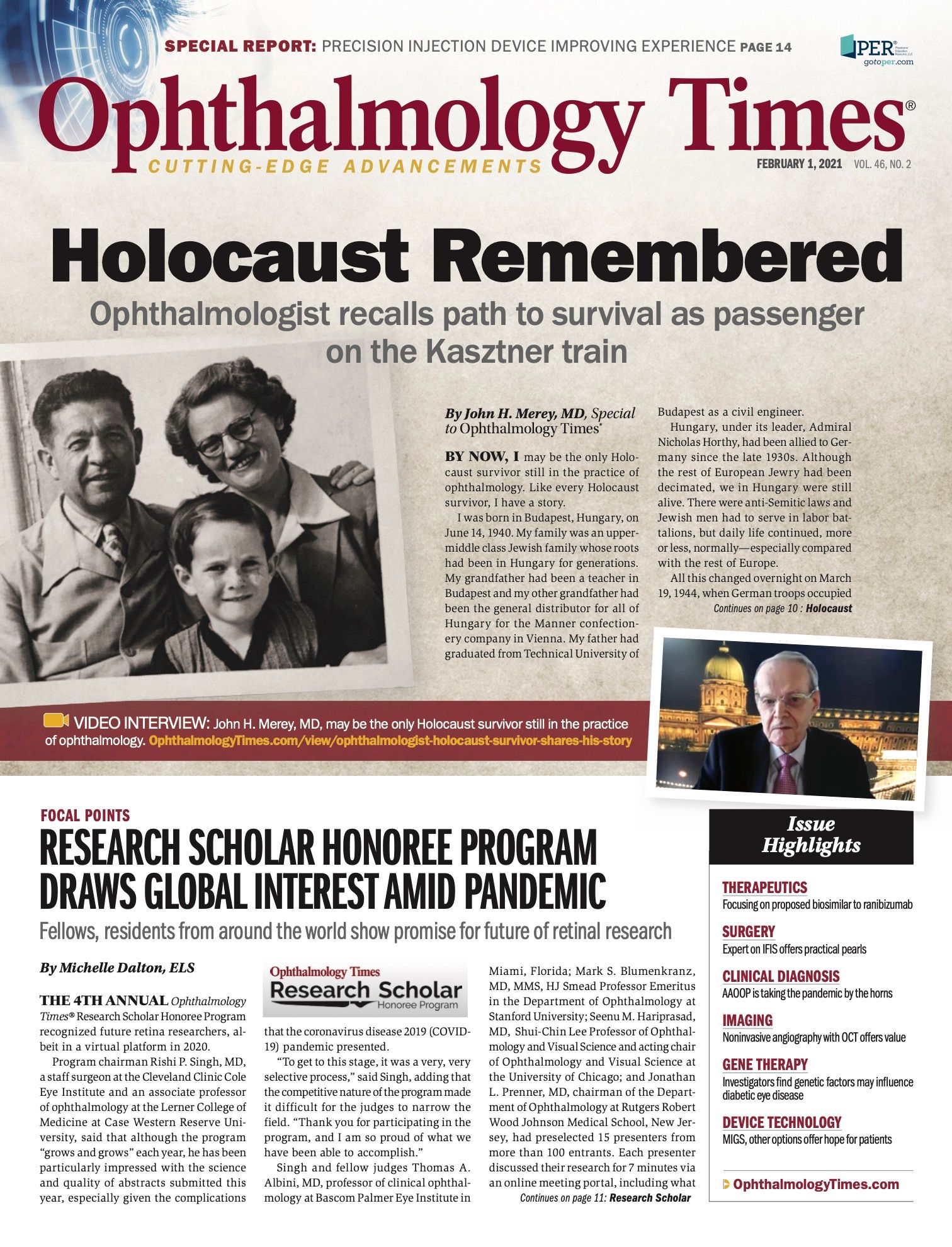Publication
Article
Digital Edition
Noninvasive angiography with OCT offers definite value
Author(s):
Tool can help physicians detect, monitor ophthalmic disease in their patients.
Optical coherence tomography angiography is a flexible tool for clinical practice. (Photo courtesy of SriniVas Sadda, MD)


This article was reviewed by SriniVas Sadda, MD
Optical coherence tomography angiography (OCT-A) is a rapidly evolving technology that has become an integral component of clinical practice, according to SriniVas Sadda, MD.
Sadda described the value of OCT-A for at least 4 applications: identifying and monitoring macular ischemia associated with various retinal vascular diseases, identifying/differentiating retinal vascular anomalies, characterizing macular neovascularization, and assessing the choriocapillaris.
Characterizing macular ischemia
The fact that OCT-A had advantages over fluorescein angiography in identifying and monitoring macular ischemia was recognized in the early days of the noninvasive vascular imaging technology.
Related: OCT-A vs laser speckle contrast imaging
In addition to providing more vascular detail and better demarcation of areas of nonperfusion, OCT-A also allows visualization of the circulation in a depth-resolved fashion, according to Sadda, the Stephen J. Ryan–Arnold and Mabel Beckman Endowed Chair and professor of ophthalmology at the David Geffen School of Medicine at UCLA in Los Angeles, California.
Assessing retinal vascular anomalies
The value of OCT-A in identifying and differentiating retinal vascular anomalies is well illustrated by its use for distinguishing intraretinal microvascular abnormalities (IRMA) from neovascularization elsewhere, said Sadda, who is president and chief scientific officer at the Doheny Eye Institute in Los Angeles.
Discussing this application, he cited work by Arya et al that showed areas of neovascularization protruding through the internal limiting membrane in eyes with diabetic retinopathy (DR).1
Related: Teleretinal screening: Effective, less costly option for DR
In addition, Sadda presented the use of OCT-A as a tool for monitoring retinal vascular lesions by showing serial images from an eye with DR. Looking at a cut taken at the level of the vitreoretinal interface, it was easy to see resolution of the neovascularization comparing images from before and 1 month after anti-VEGF injection.
“These images show how OCT-A may be applied for guiding end point management in anti-VEGF treatment of retinal neovascularization, and this application has been further facilitated by widefield OCT-A that provides visualization of more peripheral areas of neovascularization,” Sadda said. “Now, I routinely obtain a montage of large scans for monitoring eyes with proliferative DR.”
Sadda also said OCT-A has been transformative for diagnosing macular telangiectasia, revealing lesions at the level of the deep capillary plexus, and eliminating the need for fluorescein angiography.
Related: Retinal pathologies challenging to image with current technologies
Characterizing macular neovascularization
Sadda said noninvasive imaging with OCT-A can also replace fluorescein angiography in confirming macular neovascularization before starting anti-VEGF therapy in most cases.
In addition, OCT-A can be useful for definitively characterizing macular neovascularization in cases where dye-based angiography is difficult to interpret, particularly for pachychoroid spectrum disorders.
OCT-A has also helped in establishing the diagnosis of nonexudative macular neovascularization.
“OCT-A clearly demonstrates the neovascular lesion below the retinal pigment epithelium in these cases and allows a confident diagnosis,” said Sadda, adding that clinicians should recognize that work showing a higher risk of progression to exudation in eyes with subclinical macular neovascularization than in eyes without detectable macular neovascularization.2
Characterizing the choriocapillaris
Use of OCT-A for evaluating the choriocapillaris is emerging as an important application.
Related: OCTA a hope for diagnosing, managing ophthalmic diseases
Sadda said that because of the visualization it provides, OCT-A has resolved the debate of the etiology of hypofluorescence on indocyanine green angiography in eyes with placoid chorioretinopathies, demonstrating that it is related to choriocapillaris ischemia.
By showing choriocapillaris ischemia, OCT-A may enable the differential diagnosis of white dot syndromes such as multiple evanescent white dot syndrome in which there is relatively no involvement of the choriocapillaris, he said.
In addition, visualization of blood flow in the choriocapillaris offers prognostic value in eyes with dry age-related macular degeneration (AMD), considering evidence that greater impairment of choriocapillaris flow around geographic atrophy is associated with more rapid lesion progression.3
Visualization of the choriocapillaris with OCT-A can also allow differentiation between various causes of atrophy.
Read more by Cheryl Guttman Krader
--
--
References
1. Arya M, Sorour O, Chaudhri J, et al. Distinguishing intraretinal microvascular abnormalities from retinal neovascularization using optical coherence tomography angiography. Retina. 2020;40(9):1686-1695. doi:10.1097/IAE.0000000000002671
2. de Oliveira Dias JR, Zhang Q, Garcia JMB, et al. Natural history of subclinical neovascularization in nonexudative age-related macular degeneration using swept-source OCT angiography. Ophthalmology. 2018;125(2):255-266. doi:10.1016/j.ophtha.2017.08.030
3. Nassisi M, Baghdasaryan E, Borrelli E, Ip M, Sadda SR. Choriocapillaris flow impairment surrounding geographic atrophy correlates with disease progression. PLoS One. 2019;14(2):e0212563. doi:10.1371/journal.pone.0212563

Newsletter
Don’t miss out—get Ophthalmology Times updates on the latest clinical advancements and expert interviews, straight to your inbox.





